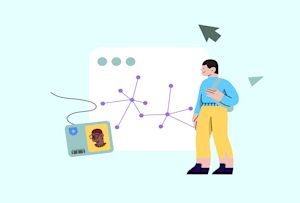Republic Day of India: 6 Powerful Reasons Why It is a Day of National Pride and Unity
Republic Day of India: Republic Day in India is celebrated on January 26 each year to mark the day when the Constitution of India came into effect in 1950. This day is of immense importance in the history of India as it symbolizes the country’s transition from a British colony to a sovereign republic, governed by its own laws and democratic principles. Republic Day is not just a public holiday but a celebration of freedom, democracy, and unity.
What is Republic Day of India?
Republic Day of India is one of India’s most significant national holidays. It commemorates the adoption of the Indian Constitution, which turned India into a republic. The Constitution, drafted by a constituent assembly led by Dr. B.R. Ambedkar, came into force on January 26, 1950, making India the world’s largest democracy. The day is marked with grand celebrations across the country, with the main event taking place in New Delhi, where the President of India unfurls the national flag and addresses the nation.
History: Republic Day of India
India’s path to becoming a republic began with its independence from British rule on August 15, 1947. After gaining independence, India continued to operate under the Government of India Act of 1935, which was a British law. However, the need for an indigenous constitution was immediately felt, and a Constituent Assembly was formed to draft the Constitution.
The drafting process of the Constitution took over two years, eleven months, and eighteen days, making it one of the longest and most detailed documents of its kind. On November 26, 1949, the Constitution was formally adopted by the Constituent Assembly, but it came into force on January 26, 1950. Since then, Republic Day has been celebrated annually on this date.
The first Republic Day Parade took place in 1950, with Dr. Rajendra Prasad, the first President of India, taking part in the ceremony. Over the years, this day has grown into a grand celebration, with cultural displays, military parades, and the President’s address to the nation.
Significance: Republic Day of India
Republic Day of India is significant for several reasons:
- Marking the Adoption of the Constitution: January 26, 1950, marks the birth of the Republic of India. This is the day when the Indian Constitution came into force, replacing the Government of India Act (1935), and India became a democratic republic governed by the rule of law.
- National Pride and Unity: Republic Day represents the sovereignty, dignity, and unity of the Indian people. It brings citizens from diverse cultures, religions, and languages together to celebrate their identity as Indians.
- Celebrating Democracy: The day highlights India’s status as the largest democracy in the world. It is a reminder of the values of freedom, justice, and equality that the country’s Constitution guarantees to every citizen.
- Honoring National Heroes: Republic Day honors the sacrifices and contributions of leaders and freedom fighters who fought for India’s independence. It also celebrates the progress India has made as a democratic nation since gaining independence in 1947.
- Showcasing Indian Culture and Strength: The Republic Day Parade in New Delhi showcases India’s military prowess, cultural diversity, and achievements. This is a symbol of India’s strength, progress, and potential on the global stage.
How is Republic Day of India Observed?
Republic Day of India is celebrated with a lot of fanfare across the nation. The observance of this day varies depending on the region, but the following are the key activities:
- Republic Day Parade in New Delhi: The Republic Day celebrations in New Delhi are the largest and most elaborate. The Parade takes place at Rajpath, where the President of India unfurls the national flag, followed by the singing of the national anthem. The parade features a display of India’s military strength, cultural performances, and the showcasing of various state tableaux that highlight the cultural diversity of the country.
- Flag Hoisting and Ceremonies: Across the country, at state capitals and local government offices, the national flag is hoisted, followed by patriotic songs and speeches. In schools and colleges, students participate in flag-hoisting ceremonies and cultural programs.
- Honoring Gallantry Awards: On Republic Day, the President of India honors soldiers, police officers, and citizens who have displayed exceptional bravery and service to the nation with gallantry awards such as the Param Vir Chakra, Ashoka Chakra, and Vir Chakra.
- Cultural Events: Republic Day is also a day for cultural programs, including dance, music, and drama, which reflect India’s rich heritage. In schools, students perform plays, sing patriotic songs, and deliver speeches in honor of the nation.
- Special Prayers and Observances: In some regions, people participate in special prayers at temples, mosques, churches, and gurudwaras for peace, prosperity, and the unity of the country.
Daily Life Impact: Republic Day of India
Republic Day of India holds special meaning for every Indian citizen. Here are some ways it impacts daily life:
- Public Holidays: On Republic Day, government offices, schools, and many businesses are closed to allow citizens to celebrate the occasion.
- Patriotism and National Pride: Republic Day evokes a sense of patriotism among citizens. People proudly display the Indian flag and wear traditional clothes to mark the occasion. The national anthem is sung, and people reflect on their duties as citizens of a democratic republic.
- Promotion of Unity: It reinforces the idea of unity in diversity. Republic Day serves as a reminder that despite differences in language, culture, religion, and traditions, all Indians are united under one Constitution and national identity.
- Inspiration for Future Generations: The celebrations inspire children and youth to take pride in their country’s history and strive to contribute to its progress. The Republic Day Parade is an opportunity for younger generations to witness India’s rich history, military prowess, and cultural heritage.
FAQs About Republic Day of India
Q: Why is Republic Day celebrated on January 26?
A: Republic Day is celebrated on January 26 to commemorate the adoption of the Indian Constitution in 1950. January 26 was chosen because it was on this day in 1930 that the Indian National Congress had declared Purna Swaraj (Complete Independence) from British rule.
Q: Who unfurls the national flag on Republic Day?
A: The President of India unfurls the national flag at the Republic Day Parade in New Delhi.
Q: What is the significance of the Republic Day Parade?
A: The Republic Day Parade showcases India’s military strength, cultural heritage, and achievements. It is a grand display of the country’s unity, diversity, and progress.
Q: Why is Republic Day important?
A: Republic Day is important as it marks the day when India became a sovereign republic, governed by its own Constitution. It reflects India’s democratic values and celebrates the country’s independence and unity.
Wishing on Republic Day of India
On Republic Day of India, here are some common wishes shared across the nation:
- “Happy Republic Day! Let’s celebrate the spirit of freedom, democracy, and unity.”
- “On this special day, let us honor the sacrifices of our freedom fighters and renew our commitment to the nation.”
- “Wishing all Indians a very Happy Republic Day! May we continue to strive for a united, prosperous, and democratic India.”
Conclusion: Republic Day of India
Republic Day of India is more than just a national holiday—it’s a day of reflection, pride, and patriotism. It reminds every Indian of the sacrifices made by freedom fighters, the journey towards becoming a republic, and the responsibilities that come with living in a democratic nation. It is a day to celebrate the values that define India—unity, diversity, justice, and equality.











You actually make it seem so easy with your presentation but I find this topic to be really something that I think I would never understand. It seems too complex and extremely broad for me. I am looking forward for your next post, I will try to get the hang of it!